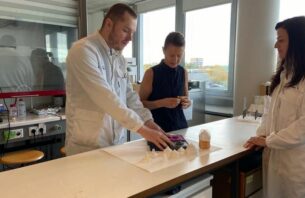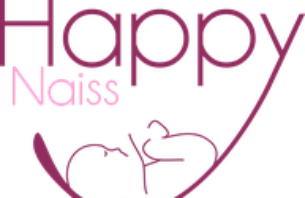
Babyflow for the HappyNaiss company
Start of the project: 01-06-2022
End of project: 31-05-2023
Christel Jouret, midwife at HappyNaiss in Namur, has collaborated with Materia Nova to develop her “teats of tomorrow”, teats that she wants to be “biomimetic”, closer to the mother's breast in shape, texture and elasticity. The aim is for baby to appreciate both bottle and breast, and to switch from one to the other without batting an eyelid.
For this development, Materia Nova worked on the following tasks:
Task 1. Development of the teat
This task comprises two research areas:
Axis 1.
Determining the raw material and shape of the teat. The use of 3D printing will enable the shape of the teat to be modulated quickly and easily by including different areas of extra thickness (for mechanical reinforcement). To achieve this, Materia Nova will use additive manufacturing techniques to produce molds into which food-grade silicone will be cast to produce the desired teat shape.
Axis 2.
The use of different grades of silicone will make it possible to select the most effective shape/material parameters to enable the baby to mimic the physiological sucking action of the breast, and to achieve an extracted milk flow of 5 to 7 ml/min of suction.
Task 2. Development of a device simulating the dynamics of milk extraction by physiological sucking of the baby at the breast.
Task 3. Production of a prototype.
A patented teat is now almost ready for industrialization. The project is financed in part by Walloon funds, both for research and development and for the manufacturing phase. Christel hopes to see its “Babyflow” teats on the market by the end of 2024.
Thanks to the support of the Walloon Region and its Technical feasibility study” research project, the biomimetic teat project was born after a year of research and development.
Read the Daily Science article





